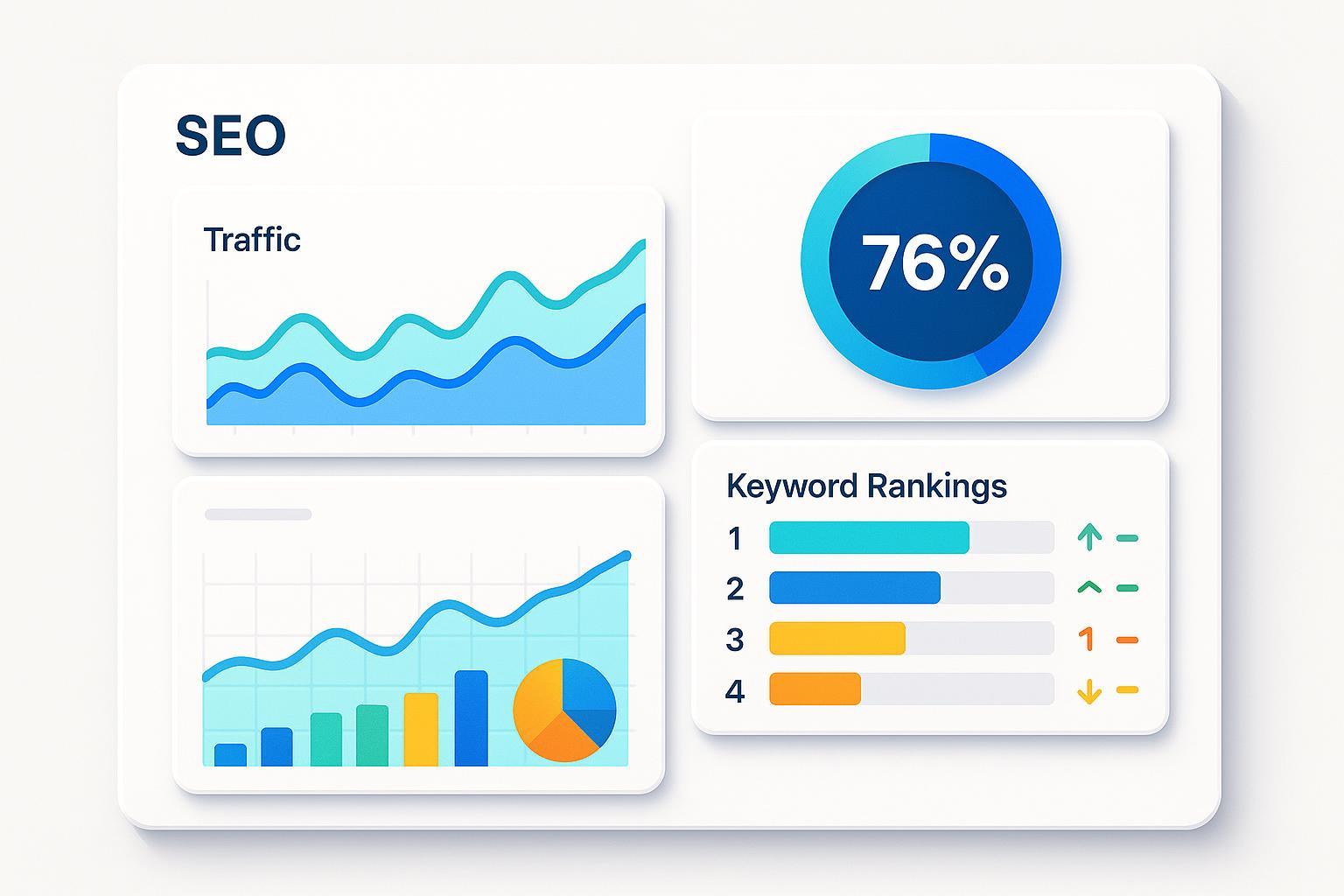SEO Visibility Scores: What Makes a Good Score for Your Website?

SEO Visibility Score is a metric that estimates how prominent your website is in organic search results for a targeted set of keywords, reflecting the share of potential clicks your site can capture compared to all possible clicks for those keywords.source
What Does "SEO Visibility Score" Really Mean?
At its core, an SEO Visibility Score quantifies your site's presence in organic search by calculating the estimated percentage of available clicks your pages are positioned to obtain, factoring in both keyword rankings and their search volume. While often displayed as a percentage, some tools use an index value.
Unlike simple rank tracking, a visibility score gives a holistic, volume-weighted view: ranking first for a low-traffic keyword won’t boost your score as much as strong positions for high-search-volume terms.
How Is SEO Visibility Calculated?
While different SEO tools use varied formulas (see Sistrix or SEMrush), the underlying logic is similar:
Visibility Score = Sum[(Rank Weight x Search Volume) for all keywords] / Total Search Volume x 100
- Rank Weight: A value based on position (e.g., 1st = 1.0, 2nd = 0.9, 3rd = 0.8, ...)
- Search Volume: Average monthly searches for each keyword
- Total Search Volume: All included keyword searches, assuming perfect #1 rankings
Example Calculation:
| Keyword | Position | Rank Weight | Search Volume | Contribution |
|---|---|---|---|---|
| Keyword A | 1 | 1.0 | 1000 | 1000 |
| Keyword B | 4 | 0.7 | 500 | 350 |
| Keyword C | 10 | 0.2 | 700 | 140 |
| Totals | 2200 | 1490 |
Visibility Score = (1490 / 2200) × 100 = 67.7%
Note: Tools may use proprietary click-through rate curves or scoring rules—expect some variability between SEMrush, Moz, and Sistrix.
What Is a Good SEO Visibility Score?
A “good” score is relative. Most industry experts agree:
| Website Type | Weak | Average | Strong |
|---|---|---|---|
| Local Business | <5% | 5–15% | 15–25%+ |
| Niche B2B Site | <10% | 10–25% | 25–40%+ |
| Mid-size E-commerce | <15% | 15–30% | 30–45%+ |
| National/Media Site | <25% | 25–45% | 45%+ |
Adapt from AgencyAnalytics, real-world agency studies, and expert opinion.
Scores above 30–40% are strong for most sites—but always benchmark against your sector and top competitors as keyword set, search intent, and site scale heavily influence these ranges.
Why Do Scores Differ Across Tools?
- Keyword Set Differences: Not all tools track the same keyword universe.
- Position Weighting & CTR Models: Sistrix, SEMrush, and Moz use different click models and rank weight curves.
- SERP Feature Handling: Some tools adjust for results with featured snippets, local packs, or ads, others don’t.
- Geographic & Device Sampling: Results vary by country, language, and device.
Practical Applications & Benchmarks
- Track score trends to monitor SEO health, not just a fixed number.
- Compare to competitors using the same metric/scope for a level playing field.
- Prioritize SEO action: drops in visibility point you straight to potential traffic losses or new competitive threats.
- Segment by category, device, or campaign for more granular impact analysis.
Real-world example: A fashion e-commerce site raised its score from 15% to 32% by expanding its keyword focus, increasing internal linking, and building authoritative links—translating directly to growth in organic traffic and sales.
Related Terms & Broader Context
- Impression Share: Portion of SERPs your listing appears in versus all available (often in paid search).
- Click-Through Rate (CTR): Percentage of users who click your result once seen.
- Domain Authority: Predicts potential to rank based on link profile.
- Organic Share of Voice: Share of all organic clicks for tracked keywords relative to top competitors.
- Keyword Ranking: Your average position for tracked keywords.
Key Takeaways
- SEO Visibility Score is a holistic, intent-weighted metric to gauge organic search presence.
- Always interpret scores relative to rivals and your past performance, not in isolation.
- Score differences between tools stem from keyword set, weighting logic, and SERP sampling.
- Use trend tracking, competitive benchmarking, and segmentation to turn visibility insights into growth actions.
For more technical details or tool-specific explanations, see Sistrix, SEMrush's guide or the AgencyAnalytics KPI definition.

